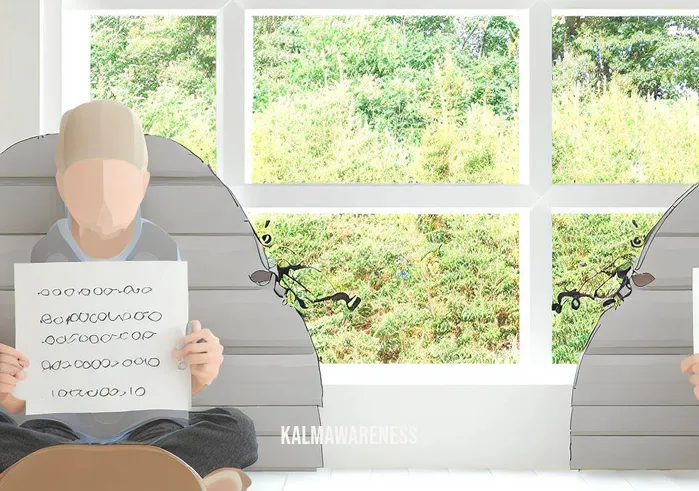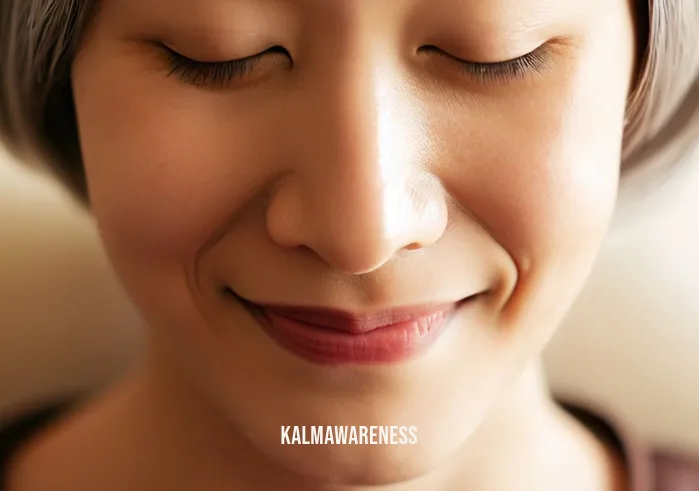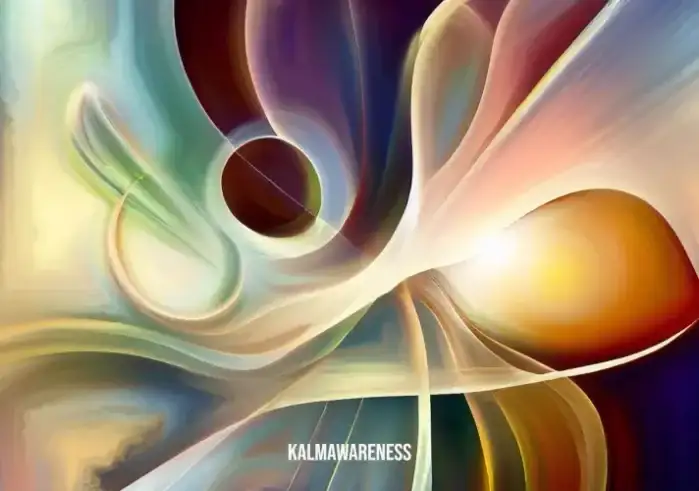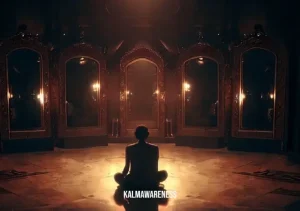Meditation Focal Point: The Foundation of Effective Practice
The concept of meditation has transcended cultural and religious boundaries, becoming a global phenomenon for mental well-being. People turn to meditation to combat stress, increase focus, and foster emotional balance. However, the core of an effective meditation session often lies in the focal point you choose to concentrate on. A meditation focal point can range from breathing techniques to the recitation of mantras, and even to visual objects like a flickering candle. In this comprehensive guide, we delve into various focal points and how they tie into different meditation strategies.
The Importance of a Focal Point in Meditation
A focal point serves as an anchor, holding your attention steady amid the ebb and flow of thoughts. When you find your mind drifting away, gently returning to your focal point helps maintain the state of mindfulness or concentrated focus.
“In meditation, a focal point acts like an anchor, giving your mind a place to rest when it starts to wander.”
The choice of a focal point can significantly impact your experience. Whether you’re suffering from anxiety or looking to slow down in a hectic world, the correct focal point can set the tone for a more effective practice.
Breathing: The Quintessential Focal Point
One of the most traditional and universally accepted focal points is breathing. Breath-centered meditation practices often differ in nuance, but the core idea remains the same: focus on your breath. Two such methods include Rain Breathing and Whole Body Breathing, each offering a unique approach to using breath as a focal point.
Why Breath is Effective
- Immediate Accessibility: Unlike mantras or objects, your breath is always with you.
- Simplicity: There are no complicated techniques to remember.
- Grounding Nature: The act of focusing on the breath often calms the nervous system and centers the mind.
These benefits explain why breathing exercises are frequently recommended for those new to meditative disciplines.
Alternative Focal Points: Mantras and Words of Power
The use of mantras or words of power is another prevalent form of focus in meditation. This is where you repeat a word, phrase, or sentence either silently or audibly. For instance, methods like Chanting Sound or Meditating on Words of Power help individuals reach a state of deep inner stillness.
Mantra-based focal points are beneficial for:
- Creating a resonant energy that elevates the mind.
- Engaging auditory faculties to increase focus.
- Offering a rhythmic pattern that can enhance the meditation experience.
A Glimpse Into Other Techniques
While breathing and mantras are fairly well-known, many other intriguing focal points can be employed. Techniques such as Visualization, Candle Gazing, and even Chakra-based meditations offer a diverse range of options for various types of practitioners.
The road to effective meditation is not one-size-fits-all. The key lies in finding the focal point that resonates with you personally and spiritually. Over the next segments, we’ll delve deeper into these intriguing techniques and offer insights into how to choose and use your focal point effectively.
So if you’re curious to understand how visualizing an image can deepen your meditation, or why some people swear by candle-gazing as a transformative experience, continue reading. The exploration of meditation focal points is both fascinating and enlightening, and choosing the right one could be the breakthrough you’ve been seeking.

Exploring the Spectrum of Meditation Focal Points
As we delve deeper into the world of meditation, it’s essential to recognize the diverse array of focal points available. Each focal point serves as a cornerstone of your meditation practice, impacting its effectiveness and the benefits you derive. From time-tested techniques like Chit Shakti Meditation for Success to more specialized ones like 6 Phase Meditation, the right focal point can make all the difference.
The Soundscape of Meditation: Chants and Binaural Beats
The realm of sound offers a myriad of opportunities to establish a meditation focal point. Buddhist Chants have been used for centuries to create a serene mental environment. Additionally, binaural beats serve as an excellent, modern-day focal point, synchronizing brainwaves to induce states of relaxation, focus, or even sleep.
Why Sound Works as a Focal Point:
- Auditory Engagement: The sound captures your attention, drawing the mind away from distractions.
- Emotional Resonance: The right sound can evoke specific emotions, assisting in the meditation goal, whether it’s relaxation or heightened focus.
- Ease of Use: With technology, you can easily access a wide range of sound-based focal points, from mantras to ambient noises.
Words and Their Power: Affirmations and Visual Cues
Words possess a unique power to inspire and calm. Affirmations or specific phrases are frequently used in techniques like Attraction Meditation or even while Meditating as a Man. The key to using words effectively is choosing phrases that resonate on a personal level.
- Meaningful: Words should carry personal significance to hold your attention.
- Short and Simple: Phrases that are easy to remember are more effective.
- Positive: Affirmations with positive connotations enhance your meditation experience.
A Handy Guide to Meditation Focal Points
| Focal Point Type | Common Techniques | Ideal For |
|---|---|---|
| Breath | Rain Breathing, Whole Body Breathing | Beginners, Stress Relief |
| Sound | Buddhist Chants, Binaural Beats | Emotional Balance, Focus |
| Words | Affirmations, Mantras | Self-Improvement, Mindfulness |
| Object | Object of Meditation like Candle Gazing | Concentration, Spiritual Growth |
| Visualization | Best Lucid Dreaming Guided Meditation | Creativity, Emotional Release |
The Role of Routine: Consistency and the Focal Point
While the choice of a meditation focal point is crucial, equally important is the consistent application of that focal point. Creating a routine around your meditation can aid in the effectiveness, much like it does in 6-minute meditation practices.
Benefits of Consistent Focal Point Use:
- Progress Tracking: Easier to notice improvements in focus and relaxation.
- Deepening of Practice: Familiarity with a single focal point can enable a deeper meditative state.
- Personal Connection: Using the same focal point regularly can create a personal bond, making the meditation practice more meaningful.
The importance of a reliable meditation focal point cannot be overstated. Whether it’s a chant, a visualization, or even an object, the right focal point can serve as an invaluable tool for enhancing your meditation experience.
As we venture further, our next chapter will offer you practical tips on how to choose the right focal point based on your specific needs and lifestyle. Whether you’re a busy professional or a student juggling coursework, there’s a focal point tailored for everyone. Continue reading to unlock the key to a more enriching and personalized meditation experience.

Unlocking Hope Through the Right Meditation Focal Point
The journey through meditation is not merely a quest for inner calm but often an expedition towards hope and inspiration. By finding the correct meditation focal point—be it the act of Hug Method Shifting or immersing yourself in Pink Meditation—you create a gateway to transformative experiences.
The Soul-Stirring Power of Visualization
Visualization is a potent tool for anyone searching for inspiration through meditation. By mentally constructing an image or scenario, you can shift your mental state, achieve goals, and find a unique form of solace.
“Visualization is daydreaming with a purpose.” – Bo Bennett
The technique not only allows you to escape the mundane but also offers a safe haven where you can explore your most profound hopes and dreams.
The Resonance of Words: Inspirational Mantras and Affirmations
Building upon the idea of words as a powerful focal point, the use of inspirational mantras and affirmations can have a tremendous impact on your mindset.
“Words have energy and power with the ability to help, to heal, to hinder, to hurt, to harm, to humiliate, and to humble.” – Yehuda Berg
A technique like Meditation for Manifestation using a Jar utilizes carefully selected words to influence your subconscious positively, opening doors to untapped potential and inspiration.
Breathing: The Pathway to Mental Serenity
Breath, often the most overlooked element, serves as a constant in the changing tides of our lives.
“When the breath wanders, the mind is unsteady, but when the breath is still, so is the mind still.” – Hatha Yoga Pradipika
Methods like Chopra’s Primordial Sound Meditation combine breathing with sound to create a symphony of peaceful rhythms that inspire tranquility and hope. This blending of breathing with other focal points offers a multi-faceted approach to unlock inspiration.
The Healing Touch: Somatic Techniques
For those who find hope in physical sensations, somatic techniques could be the perfect meditation focal point. Practices that involve bodily sensations or movements, like Hug Method Shifting, offer a tangible form of hope, grounding you in the present moment while inspiring future possibilities.
“The body benefits from movement, and the mind benefits from stillness.” – Sakyong Mipham
By incorporating physical sensations into your meditation, you allow for a fuller, multi-dimensional experience that both grounds and inspires.
Embrace the Variety: Your Personal Roadmap
The multitude of meditation focal points—visuals, sounds, words, breath, and touch—allow for a rich tapestry of experiences. All these focal points converge to inspire hope and instill a sense of purpose, each in its unique way. They act as lanterns on your meditative path, illuminating dark corners and unveiling the richness of your internal world.
Key Considerations for Hope-Inducing Focal Points:
- Alignment with Personal Goals: Your focal point should mirror the inspiration you seek.
- Emotional Resonance: Choose a focal point that emotionally engages you.
- Flexibility: Don’t be afraid to switch focal points as your needs and moods evolve.
The real treasure lies not just in the act of meditating but in the depth and richness that the right focal point can bring to your practice. As we transition to the next chapter, we will explore how to integrate these focal points into your daily life seamlessly. Whether you’re looking to cultivate mindfulness or boost your mental wellness, there’s a way to weave the magic of the perfect focal point into your daily routine. Continue reading to discover how to tailor your meditation practice to fit your unique lifestyle needs.
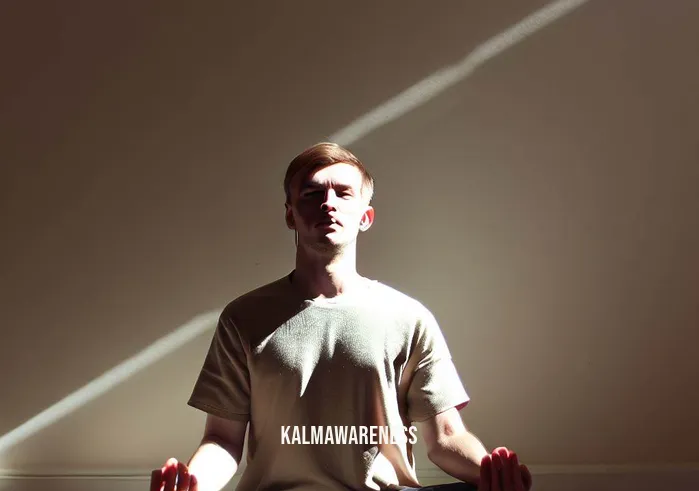
The Anatomy of a Perfect Meditation Focal Point
Navigating the labyrinth of meditation practices can feel overwhelming, but it becomes more straightforward when you understand the nuts and bolts of a meditation focal point. This chapter aims to dissect various aspects of selecting the perfect focal point in meditation, drawing on everything from ancient traditions like Chit Shakti Meditation for Success to more modern practices like Rain Breathing.
How to Identify Your Ideal Meditation Focal Point
Before delving into bullet points and lists, let’s touch upon the critical aspect of identifying your ideal meditation focal point. This identification is essential because it acts as the pivot around which your meditation revolves.
Core Factors to Consider:
- Personal Affinity: What naturally draws your attention?
- Current Needs: Are you trying to achieve peace, focus, or perhaps relief from suffering from anxiety?
- Your Lifestyle: Does your focal point easily integrate into your daily life?
The Many Facets of Meditation Focal Points
Now, let’s break down some of the primary focal points one can utilize during meditation.
Breath-based Techniques
- Whole-Body Breathing: A technique that promotes whole-body breathing allows you to be conscious of your breathing cycle, from inhalation to exhalation.
- Rain Breathing: For those who find solace in nature, this technique uses the soothing rhythm of raindrops as a focal point.
Word-based Techniques
- Buddhist Chants: Traditional Buddhist chants can be powerful focal points.
- Meditating on Words of Power: Some prefer the power of words, and meditating on words of power can serve as an effective focal point.
Sound-based Techniques
- Chanting: The human voice can produce a variety of tones that are beneficial, especially if you are into chanting sounds.
- 6-Phase Meditation: This type of 6-phase meditation employs soundscapes to assist in meditation.
Object-based Techniques
- Candles: Focusing on a candle flame is an age-old practice that encourages single-pointed focus.
- Chit Shakti Meditation: Some techniques employ specific objects to enhance your meditation, such as Chit Shakti, which focuses on the power of the mind to manifest success.
Time-based Techniques
- 6-Minute Meditation: For those on a tight schedule, a quick 6-minute meditation can also serve as a worthwhile focal point.
- Meditation for Slowing Down: On the flip side, if you need to slow down, this meditation for slowing down employs time as a focal point.
The Balancing Act: Juggling Multiple Focal Points
Sometimes, it might be beneficial to use multiple focal points in a single meditation session or across different sessions. Doing so can offer a richer, more well-rounded experience.
Curating Your Personal Meditation Menu
When it comes to meditation, one size does not fit all. It’s important to experiment with different focal points to see which resonate with you most strongly. By curating your “menu” of meditation focal points, you can better tailor your practice to meet your evolving needs.
In the next chapter, we’re taking this deep dive a step further. There, we’ll explore how to keep your meditation practice vibrant, fresh, and continually inspiring. From seasonal adjustments to significant life changes, you’ll discover how to dynamically adapt your meditation focal points for an ever-renewing experience. Prepare to be enlightened as we reach the conclusion of this intricate journey through the landscape of meditation focal points. Continue reading to unlock the ultimate guide to a fulfilling meditation practice.
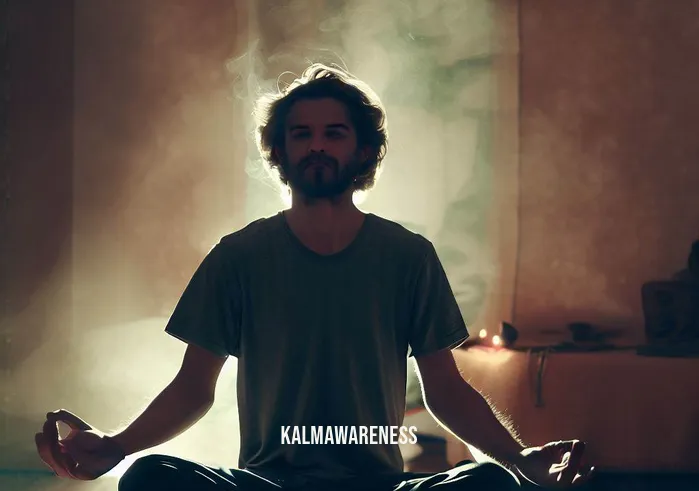
Reflections on the Journey Through Meditation Focal Points
As we reach the end of our expedition exploring the multi-dimensional aspects of meditation focal points, let’s take a moment to breathe—quite literally. Whether you’re a novice trying to decipher the best lucid dreaming guided meditation or a seasoned practitioner engaged in Chopra’s Primordial Sound Meditation, the crux of the matter remains your focal point. It’s the North Star guiding your mental vessel through the galaxy of awareness and inner peace.
How Far We’ve Come
Remember, your meditation journey is akin to an intricate dance. The steps might seem complicated at first, but once you catch the rhythm—especially with the right focal point—the moves come naturally. Through this exploration, we’ve traversed everything from meditative Chinese disciplines to the science of manifestation using a jar.
The Beauty of Choice
One of the most uplifting revelations is the sheer variety of options at your disposal. There’s no one-size-fits-all approach here; it’s all about your individual journey. So whether it’s through best shifting guided meditation or something as enchanting as pink meditation, remember that your focal point serves as both a guide and a reflection of your innermost needs and aspirations.
Take-Home Wisdom
If there’s one nugget of wisdom to pocket as you step back into the bustle of everyday life, it’s this: your focal point is more than just a tool; it’s a loyal companion. It helps you align with your inner being, providing a sanctuary of calm amidst the chaos of life. This is not a passing fad, but a timeless technique validated by cultures and civilizations across history.
A Cheerful Goodbye, But Not a Farewell
So, here we are at the end of this enriching journey—but let’s consider it a “see you later” rather than a “goodbye.” If you find yourself craving more enlightening content like this, feel free to explore other articles in our series, or revisit previous chapters to reabsorb their essence.
Your Next Steps
As we part ways, I leave you with this call-to-action: continue exploring, continue diving deeper into the ocean of your inner world. The more you practice, the more you refine your technique, and the clearer your path becomes. If you’ve relished this voyage, then you’ll certainly appreciate our future features, which promise even deeper dives into the world of mindfulness.
A Heartfelt Thank You
To our cherished readers, thank you for allowing us to guide you through this intimate and transformative journey. Your time and engagement are the wind beneath the wings of this platform, propelling us to continually offer valuable insights. Stay tuned for more illuminating content in our upcoming editions.
As we conclude this chapter, may your chosen focal point serve as a lighthouse, illuminating your path through the oft-murky waters of daily life. Until our paths cross again in another enlightening journey, happy meditating!
